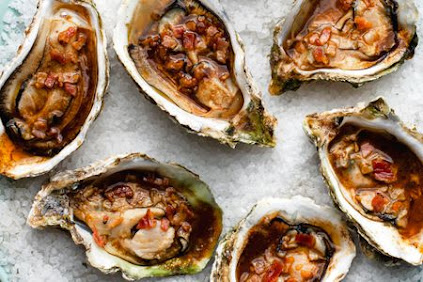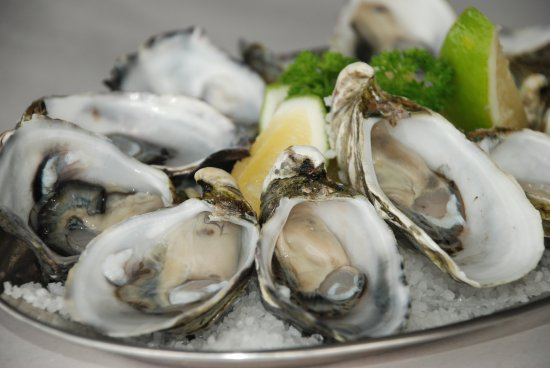WHAT ARE THE DIFFERENT TYPES OF OYSTERS?
Even if you know how to shuck an oyster, you may not be aware of the significant variations in flavor, appearance, size and texture between different types of oysters. Some of the most common varieties of oysters, including ones you can find usually at your local seafood market, include:
Atlantic Oysters - Also called “Eastern oysters”,
these typically have a larger shell and are known for their distinctive briny
flavor.
Pacific Oysters - found globally, this species of
oyster is also on the larger side and is often described as having a slightly
sweet flavor and creamy texture.
Kumamoto Oysters - one of the smaller oyster
varieties, these are thought to have originated in Asia but are now produced
internationally. Their noticeably green shells are quite small, and feature a
slightly sweet, fruity flavor (sometimes called the “Chardonnay of oysters”).
Belon Oysters - often referred to as “European
Flats”, these oysters come from Europe but now grow throughout the north
eastern coast of the US. The Belon oyster flavor profile is described as
slightly metallic or coppery and less briny than many other oyster species.
Hood Canal - a wide variety of different oyster types
are grouped together and generally referred to as Hood Canal oysters due to
their popularity and widespread growth in Hood Canal, WA. The flavor and
appearance to Hood Canal oysters changes significantly depending on the
specific location of their harvesting.
HOW TO PROPERLY SHUCK AN OYSTER: A STEP-BY-STEP GUIDE
Below is a step-by-step guide that will help you learn how to shuck an oyster and hone this skill with confidence.
Select an appropriate tool, preferably an oyster knife.
Protect your hand by wearing an oyster glove, oven mitt, or
towel in the hand holding the oyster.
Insert the knife between the top and bottom shell where
there is a small, naturally occurring gap (found near the oyster’s hinge at the
narrower end of the shells).
Make sure the cupped side of the oyster shell is facing down as it will catch the oyster’s liquid (this is the larger of the two shell halves). This liquid, called liquor, helps to keep the oyster fresh before it’s eaten.
Push the shucking tool in between the shells far enough to
get the leverage needed.
Twist the oyster knife or other tool repeatedly in an upward
fashion. It might take a few twists, and you should feel a noticeable “pop”
when the hinge connecting the top and bottom shells is broken.
Continue to slide the knife between the shells until both
halves are cleanly separated (once the adductor muscle has been cut).
Pass a clean cutting tool underneath the oyster flesh to cut the second adductor muscle and release the edible portion from the shell.
Currently, Pacific Oysters Market
in Australia are grown in Broken Bay (Hawksberry River), Wallis Lake
and Port Stephens. However in the near future other Estuaries on the Coast of
New South Wales will also commence production. Tasmania and South Australia
have in the past been the major supplier of Pacifics, however this trend is
slowly changing. In South Australia the more common harvesting areas are,
Coffin Bay, Smoky Bay and Denial Bay. In Tasmania the better known areas are St
Helens, Great Bay and Brunny Island.




Comments
Post a Comment